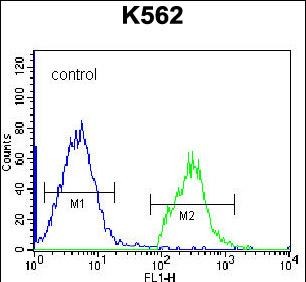

| WB | 1/1000 | Human,Mouse,Rat |
| IF | 咨询技术 | Human,Mouse,Rat |
| IHC | 咨询技术 | Human,Mouse,Rat |
| ICC | 技术咨询 | Human,Mouse,Rat |
| FCM | 1/10-1/50 | Human,Mouse,Rat |
| Elisa | 咨询技术 | Human,Mouse,Rat |
| Aliases | Histone H2B type 1-L, Histone H2Bc, H2B/c, HIST1H2BL, H2BFC |
| Entrez GeneID | 8340 |
| WB Predicted band size | 14.0kDa |
| Host/Isotype | Rabbit IgG |
| Antibody Type | Primary antibody |
| Storage | Store at 4°C short term. Aliquot and store at -20°C long term. Avoid freeze/thaw cycles. |
| Species Reactivity | Human |
| Immunogen | This HIST1H2BL antibody is generated from rabbits immunized with a KLH conjugated synthetic peptide between 1-30 amino acids from the N-terminal region of human HIST1H2BL. |
| Formulation | Purified antibody in PBS with 0.05% sodium azide. |
+ +
The HIST1H2BL (N-term) antibody is designed to specifically target the N-terminal region of the histone H2B type 1 protein encoded by the HIST1H2BL gene. Histones are essential chromatin components that organize DNA into nucleosomes, playing critical roles in DNA packaging, gene regulation, and epigenetic modifications. The H2B family, including HIST1H2BL, contributes to nucleosome core structure, interacting with H2A, H3. and H4 histones to stabilize DNA-histone interactions. The N-terminal tail of H2B is subject to post-translational modifications (PTMs) such as acetylation, methylation, and ubiquitination, which influence chromatin remodeling and transcriptional activity.
This antibody is particularly useful for studying histone dynamics, epigenetic regulation, and chromatin-related processes in research applications like Western blotting, immunofluorescence, or chromatin immunoprecipitation (ChIP). Its specificity for the N-terminal region ensures detection of HIST1H2BL even amid high homology across H2B variants. Researchers often use it to investigate cell cycle-dependent histone modifications, DNA repair mechanisms, or aberrant epigenetic patterns in diseases like cancer. Validation typically includes testing on knockout cells or recombinant proteins to confirm minimal cross-reactivity with other H2B isoforms. As part of the HIST1 cluster on chromosome 6. HIST1H2BL’s expression and modifications may also serve as biomarkers in studies of differentiation, apoptosis, or therapeutic responses.
×